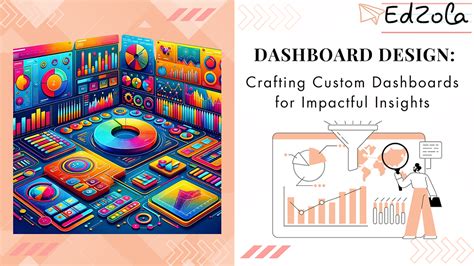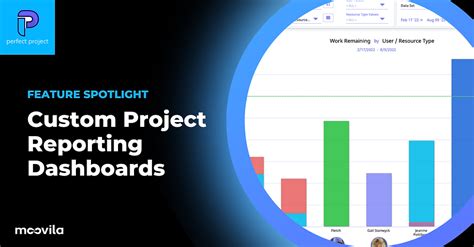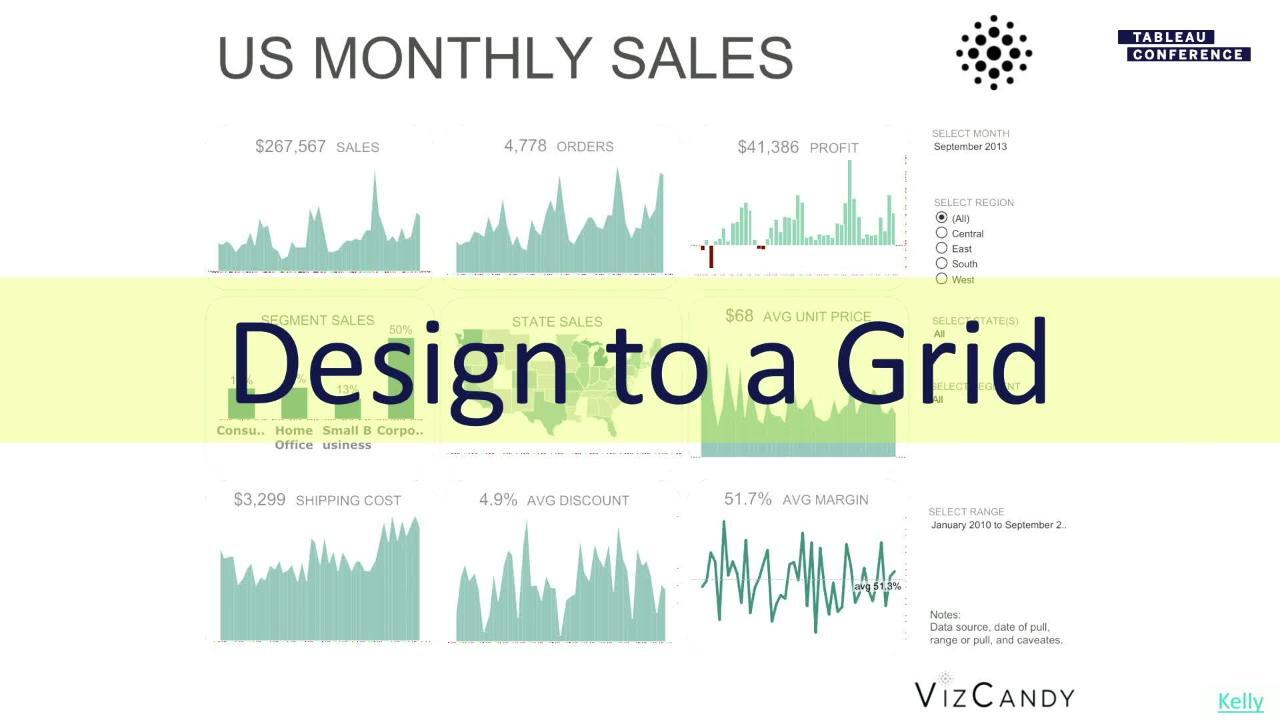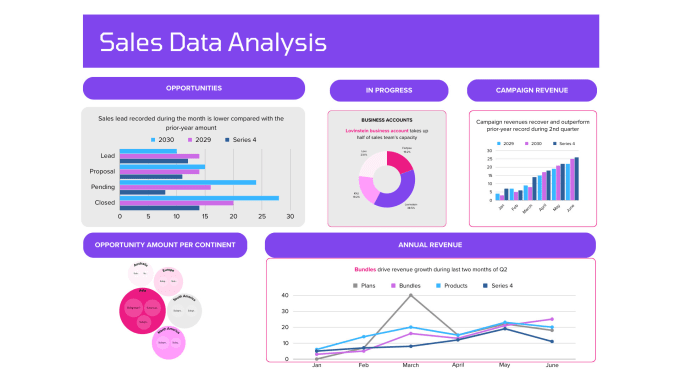Dashboard Design Secrets: Crafting Impactful Visuals

Dashboard design is an art that combines data visualization, user experience, and information architecture to create impactful and meaningful representations of complex data. Effective dashboard design is crucial for businesses and organizations to make data-driven decisions, monitor key performance indicators (KPIs), and gain actionable insights. In this comprehensive guide, we will explore the secrets behind crafting visually stunning and informative dashboards that engage and inform users.
Understanding the Purpose and Audience

The first step in designing an effective dashboard is to clearly define its purpose and understand the target audience. Dashboards can serve various purposes, such as monitoring real-time data, tracking progress towards goals, analyzing trends, or providing an overview of key metrics. Knowing the specific objectives and the audience’s needs is essential for creating a tailored and meaningful visual experience.
Define Dashboard Objectives
Start by identifying the primary objectives of the dashboard. Is it intended to provide a high-level overview of key performance indicators, or does it need to offer detailed insights into specific aspects of the data? Understanding the dashboard’s purpose will guide the selection of appropriate data sources, metrics, and visualization techniques.
Know Your Audience
Consider the background, expertise, and information needs of the dashboard users. Are they executives seeking a quick glance at critical metrics, or analysts requiring in-depth data exploration? Tailoring the dashboard’s complexity, interactivity, and level of detail to the audience’s needs ensures a more effective and engaging experience.
Data Selection and Preparation

The quality of the data presented on a dashboard directly impacts its effectiveness. Selecting the right data and preparing it for visualization is a critical step in the dashboard design process.
Choose Relevant Data Sources
Identify the data sources that align with the dashboard’s objectives. This may include databases, spreadsheets, APIs, or external data feeds. Ensure that the data is reliable, up-to-date, and relevant to the key metrics and indicators being tracked.
| Data Source | Relevance |
|---|---|
| Internal CRM System | Sales Performance |
| Social Media Analytics | Brand Engagement |
| Financial Reports | Revenue and Expenses |

Data Cleaning and Transformation
Raw data often requires cleaning and transformation to ensure accuracy and consistency. This process involves handling missing values, outliers, and data anomalies. Additionally, data may need to be aggregated, grouped, or transformed into a format suitable for visualization.
Data Validation and Quality Assurance
Implementing data validation checks and quality assurance measures is crucial to maintain the integrity of the dashboard’s data. This includes verifying data accuracy, consistency, and timeliness. Regular data audits and monitoring can help identify and address any issues promptly.
Visual Design Principles

The visual design of a dashboard plays a crucial role in conveying information effectively and engaging users. Applying design principles and best practices ensures that the dashboard is not only informative but also aesthetically pleasing and easy to interpret.
Color and Contrast
Color is a powerful tool in dashboard design. Use a limited color palette to maintain consistency and avoid visual clutter. Ensure that colors have sufficient contrast to make important elements stand out. Consider the psychological impact of colors and their association with specific metrics or emotions.
Typography and Labeling
Choose a legible font that complements the dashboard’s overall design. Use clear and concise labels for data points, charts, and other elements. Ensure that text is appropriately sized and spaced to enhance readability, especially when users may be viewing the dashboard on different devices or screen sizes.
Layout and Organization
Organize the dashboard’s layout in a logical and intuitive manner. Group related elements together and use white space to improve visual hierarchy and clarity. Consider the user’s natural flow of attention and ensure that the most critical information is easily accessible and visible.
Data Visualization Techniques
Select appropriate visualization techniques based on the nature of the data and the insights you want to convey. Common visualization types include bar charts, line graphs, pie charts, scatter plots, and heatmaps. Each type has its strengths and weaknesses, so choose wisely based on the data’s characteristics and the story you want to tell.
Interactivity and User Engagement

Static dashboards have their place, but interactive dashboards offer a more engaging and dynamic user experience. Interactivity allows users to explore data, drill down into details, and gain deeper insights.
Interactive Elements
Incorporate interactive elements such as sliders, filters, and drill-down options. These features enable users to manipulate the data, change parameters, and explore different scenarios. Interactive dashboards empower users to find answers to their specific questions and make more informed decisions.
User-Friendly Navigation
Ensure that the dashboard’s navigation is intuitive and easy to understand. Use clear labels, breadcrumbs, or a menu system to guide users through different sections or pages. Avoid excessive complexity and provide a seamless user experience that encourages exploration.
Personalization and Customization
Offer users the ability to personalize their dashboard experience. This can include allowing them to select specific data sets, customize color schemes, or choose the layout that best suits their preferences. Personalization enhances user engagement and makes the dashboard more relevant to individual users.
Data Storytelling and Context

Effective dashboard design goes beyond presenting data; it tells a story. Providing context and narrative around the data helps users understand the significance of the information and make more meaningful interpretations.
Data Narratives
Craft a narrative around the data by incorporating text, annotations, or callouts. Explain the story behind the data, highlight key trends or anomalies, and provide insights that help users interpret the information accurately. Data narratives add depth and meaning to the dashboard.
Comparative Analysis
Enable users to compare data across different time periods, regions, or categories. Comparative analysis helps identify trends, patterns, and outliers. Provide interactive tools, such as sliders or dropdowns, that allow users to adjust the comparison parameters and gain deeper insights.
Benchmarking and Targets
Include benchmarks or targets alongside the data to provide a reference point for users. This helps them understand whether the current performance is meeting expectations or if there are areas for improvement. Benchmarks can be industry averages, historical data, or predefined goals.
Performance and Optimization

A well-designed dashboard is not only visually appealing but also performs efficiently. Optimization ensures that the dashboard loads quickly, responds smoothly to user interactions, and can handle large data sets without compromising performance.
Data Caching and Preprocessing
Implement data caching and preprocessing techniques to improve dashboard performance. Preprocessing involves aggregating or summarizing data in advance, reducing the computational load when the dashboard is accessed. Data caching stores frequently accessed data in memory, enabling faster retrieval.
Efficient Visualization Rendering
Optimize the rendering of visualizations by using efficient algorithms and techniques. This includes minimizing the number of data points rendered, utilizing hardware acceleration, and employing techniques like data binning or aggregation to improve performance.
Server-Side Optimization
If the dashboard is server-based, optimize the server-side processes to handle data retrieval and processing efficiently. This may involve optimizing database queries, using caching mechanisms, or implementing load balancing to distribute the workload across multiple servers.
Best Practices and Common Pitfalls

While there are no one-size-fits-all rules in dashboard design, certain best practices and common pitfalls can guide designers toward creating more effective and user-friendly dashboards.
Best Practices
- Keep it simple: Avoid clutter and excessive complexity. Focus on the most important data and insights.
- Use clear and concise labels: Ensure that data points and visualizations are properly labeled to avoid confusion.
- Provide context: Include contextual information, such as time frames, units of measurement, or comparisons, to help users interpret the data accurately.
- Test and iterate: Conduct user testing and gather feedback to refine and improve the dashboard’s design and functionality.
Common Pitfalls
- Overloading with data: Avoid cramming too much information into a single dashboard. Prioritize the most critical data and consider creating separate dashboards for different focus areas.
- Inconsistent design: Maintain a consistent visual style and design language throughout the dashboard to enhance usability and user experience.
- Lack of interactivity: Interactive features add value to dashboards. Consider incorporating sliders, filters, or drill-down options to enhance user engagement.
- Neglecting performance: Ensure that the dashboard performs well, especially when dealing with large data sets. Optimize data processing, rendering, and server-side operations to maintain a smooth user experience.
Dashboard Design Tools and Resources

Numerous tools and resources are available to assist in dashboard design. These tools offer a range of features, from data visualization and interactivity to collaboration and data integration.
Popular Dashboard Design Tools
- Tableau: A powerful data visualization and analytics platform offering a wide range of visualization types and interactive features.
- Power BI: Microsoft’s business intelligence tool that provides a comprehensive suite of data visualization, analysis, and reporting capabilities.
- Google Data Studio: A free, web-based tool that allows users to create interactive dashboards and reports using Google’s vast data ecosystem.
- Metabase: An open-source analytics platform that enables users to create and share interactive dashboards and visualizations.
Design Resources and Inspiration
- Data Visualization Society: A global community of data visualization practitioners sharing resources, best practices, and inspiration.
- Information is Beautiful: A website featuring visually appealing and informative data visualizations and infographics.
- Datawrapper: A tool for creating simple and effective data visualizations, including charts, maps, and tables.
- D3.js: A JavaScript library for creating interactive and dynamic data-driven visualizations.
Future Trends and Innovations

The field of dashboard design is constantly evolving, driven by advancements in technology and changing user expectations. Staying abreast of emerging trends and innovations can help designers create more innovative and effective dashboards.
Artificial Intelligence and Machine Learning
AI and machine learning are increasingly being integrated into dashboard design to enhance data analysis and provide automated insights. These technologies can identify patterns, make predictions, and offer recommendations based on historical data and user behavior.
Natural Language Processing (NLP)
NLP enables dashboards to understand and respond to natural language queries, making data exploration more intuitive and user-friendly. Users can ask questions in plain language, and the dashboard can provide relevant answers or visualize the requested data.
Immersive Visualizations
Immersive visualizations, such as virtual reality (VR) and augmented reality (AR), offer new and engaging ways to explore data. These technologies provide a more interactive and immersive experience, allowing users to manipulate and interact with data in a three-dimensional environment.
Collaborative Analytics
Collaborative analytics tools enable multiple users to work on the same dashboard simultaneously, fostering collaboration and knowledge sharing. These tools facilitate real-time collaboration, data sharing, and discussion, enhancing the overall effectiveness of data-driven decision-making.
How can I ensure my dashboard is accessible to users with visual impairments or color blindness?
+To make your dashboard accessible, consider the following: use high contrast colors, avoid relying solely on color to convey information, provide alternative text for images and charts, and ensure that interactive elements are keyboard accessible. Additionally, consider implementing tools or features that allow users to customize color schemes or adjust the dashboard's visual presentation to their specific needs.
<div class="faq-item">
<div class="faq-question">
<h3>What are some common mistakes to avoid when designing dashboards?</h3>
<span class="faq-toggle">+</span>
</div>
<div class="faq-answer">
<p>Common mistakes include: overcrowding the dashboard with too much information, using complex or unfamiliar visualizations, neglecting to provide clear labels and context, and failing to test the dashboard's performance and usability. It's important to strike a balance between providing sufficient information and keeping the dashboard visually appealing and easy to understand.</p>
</div>
</div>
<div class="faq-item">
<div class="faq-question">
<h3>How can I incorporate real-time data into my dashboard?</h3>
<span class="faq-toggle">+</span>
</div>
<div class="faq-answer">
<p>To incorporate real-time data, you can use APIs or data streams that provide up-to-date information. Set up data refresh intervals to ensure the dashboard displays the latest data. Additionally, consider using caching mechanisms to store frequently accessed data and improve performance when displaying real-time updates.</p>
</div>
</div>
</div>



